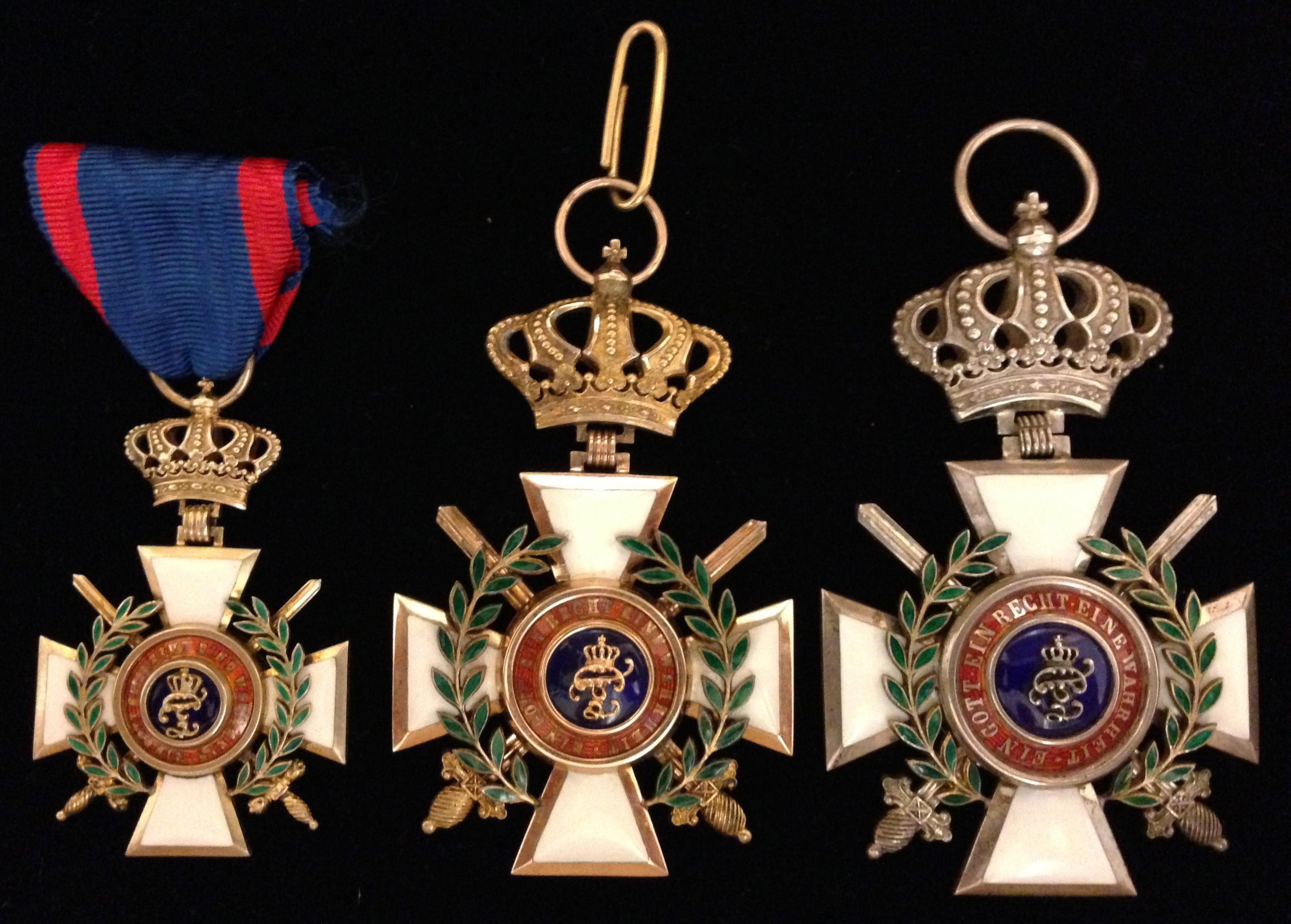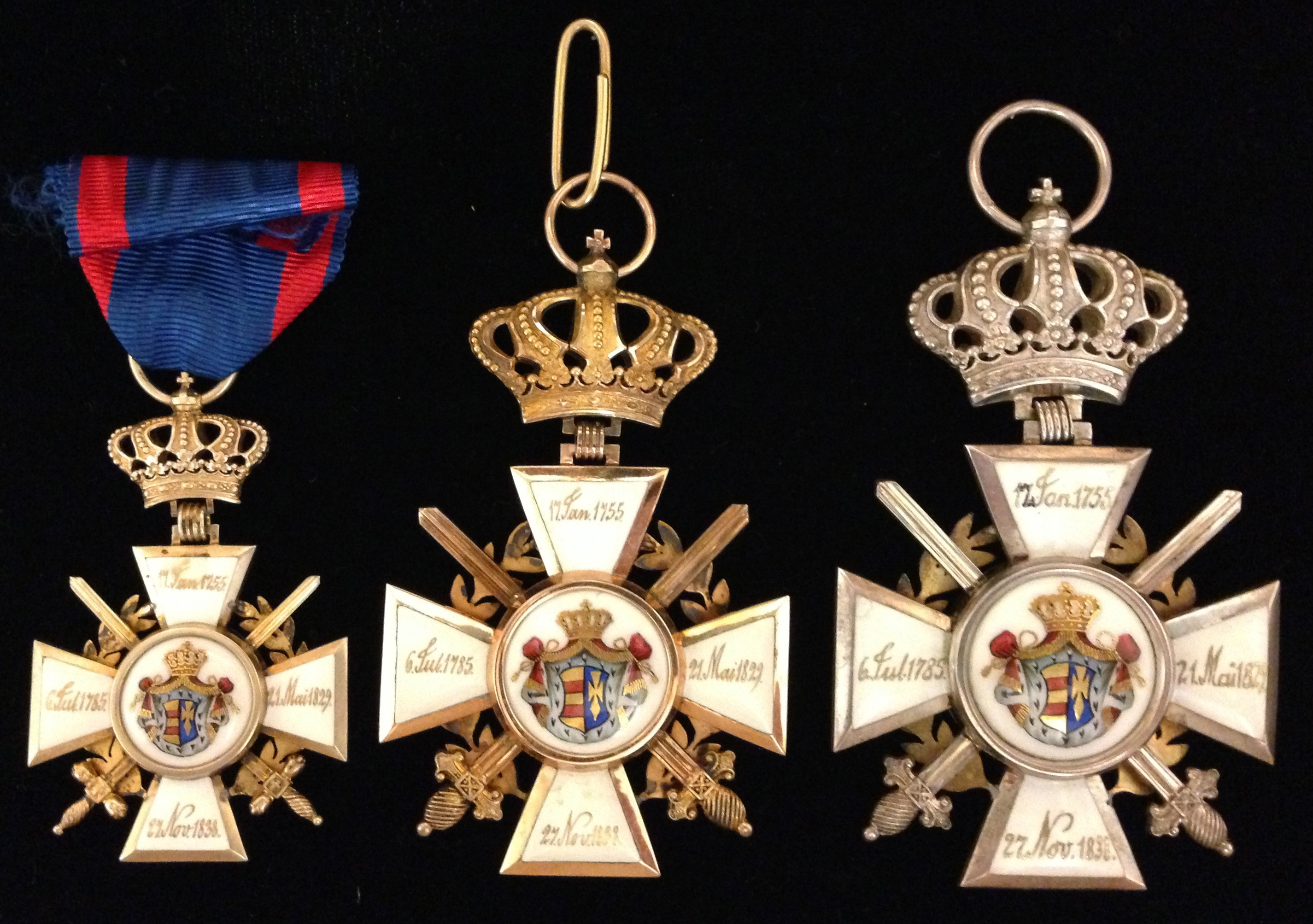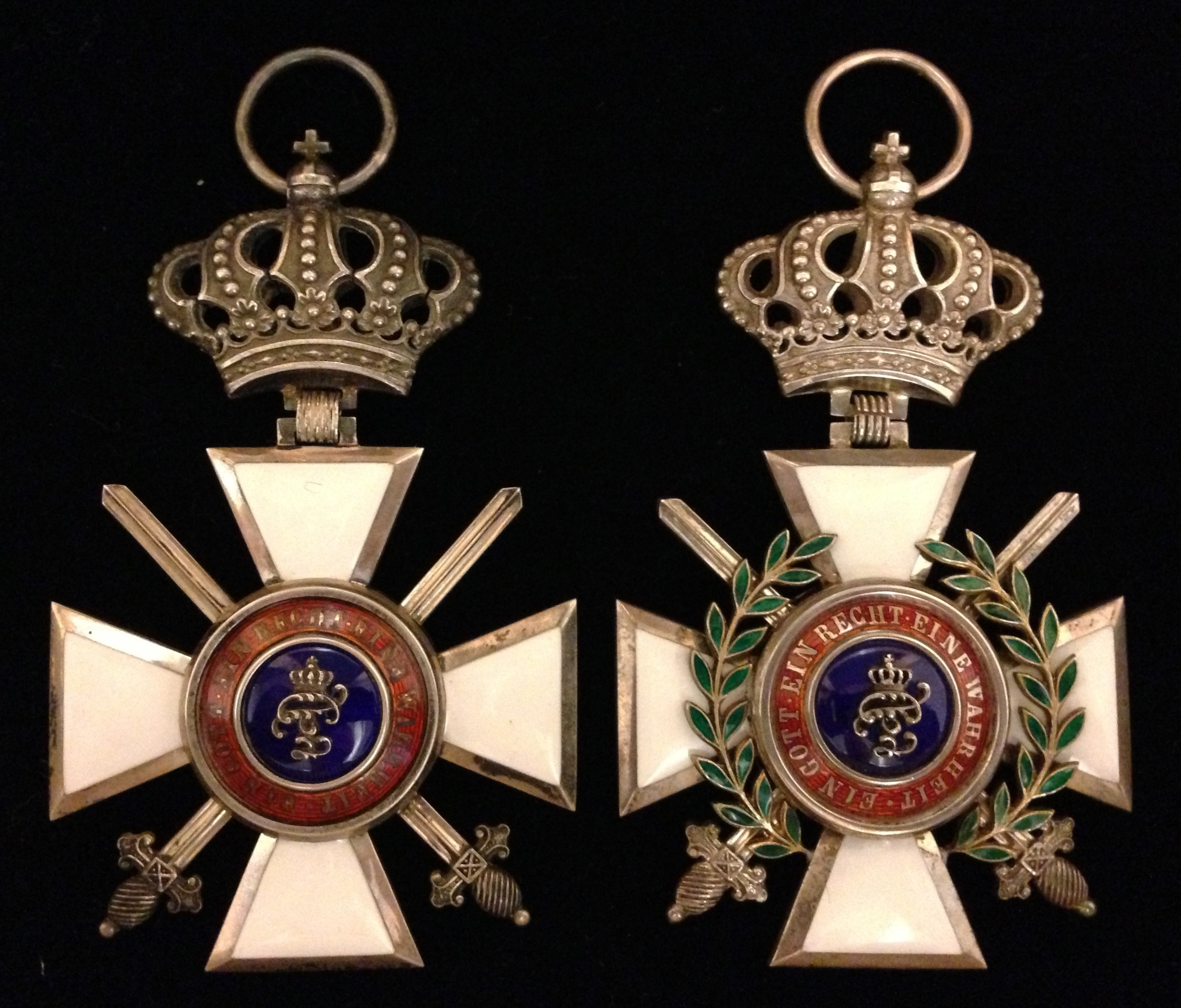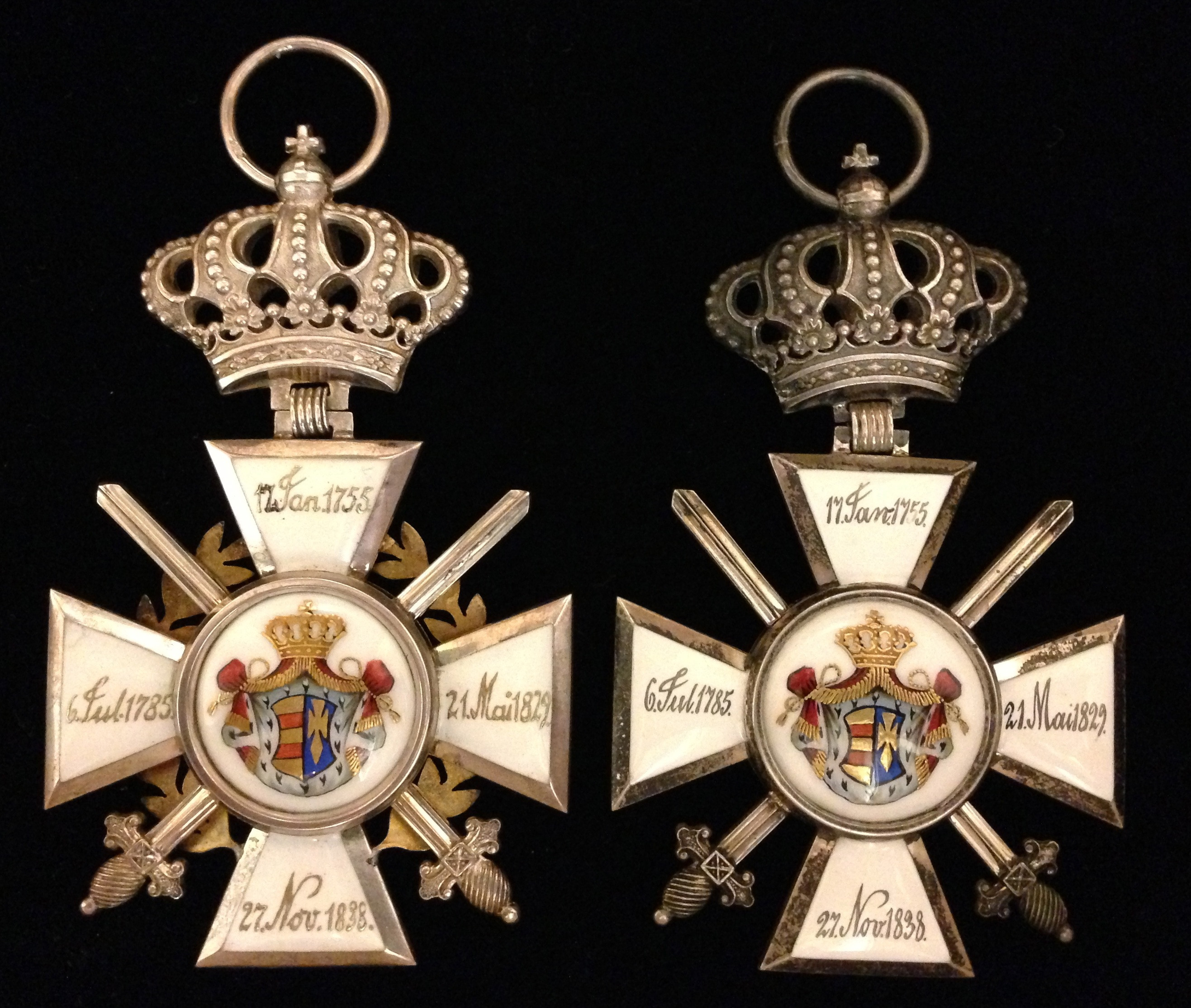|
The Grand
Duke of Oldenburg
issued swords for military personnel quite early
compared to other German states on February 11, 1856
after a hearing with the Orders capital on January 17,
1856. The actual swords crossed through the middle of
the insignia or were mounted through the middle of the
star. A promotion into a higher grade for service/merit
in peace time triggered so called swords on ring, with
crossed swords mounted between the cross and the crown
of the insignia respectively on the ring above the cross
and above the medallion on a given star. The practice of
awarding swords for bravery during World War I ceased due to awarding the Prussian Iron Cross and the
Oldenburg Friedrich August Cross instead. Only from 1917
on the practice of awarding swords was resurrected. To
do so a potential recipient had to have received a
Prussian house order with swords (Pour le Merite, Red
Eagle Order, Crown Order, House order of Hohenzollern,
etc). One had to be further affiliated to or fulfill the following requirements as well:
a)
be citizen of the grand duchy of Oldenburg
b)
a member of the Oldenburg Regiments at the day of the
declaration of war (Infantry Regiment No 91, Dragoon
Regiment No 19 or 1st detachment of the Field Artillery
Regiment No 62)
c)
those that went to war with those two above mentioned
regiments but moved to other duties during the war
d)
those that obtained the right to wear the uniform of
those two regiments, still in service or inactive to
those regiments.
Based
on those rules, awards were given to
"foreigners" in 1919. Sword decoration of this
kind would be promoted together with an advancement into
a higher class. The so called "Swords on Ring"
were made obsolete.
Towards
the very end of World War I on September 18, 1918, the
laurels were issued. The grand duke was presented with
this extension to his house order on September 12 and
with an actual draft and prototype on September 14 by
Orders Secretary Meyer despite his verbal vetoing.
Naturally
all the above mentioned decorations are extremely rare.
This finds proof with the following table showing the
results of a 1919 conducted inventory of living recipients
and statistics of order decorations awarded from 1839 to
1919:
| Class |
1839-1917 |
1918 |
1919 established
number of living recipients |
| Grand Cross with
golden Crown |
277 |
|
102 |
| |
with swords |
14 |
|
4 |
| |
with swords on ring |
4 |
|
4 |
| |
with swords and laurel leafs |
|
1 |
1 |
| |
with diamonds |
2 |
|
|
| Grand Cross with
silver Crown |
584 |
5 |
244 |
| |
with swords |
16 |
|
8 |
| |
with swords on ring |
21 |
|
9 |
| |
with swords and laurel |
|
1 |
1 |
| Grand Commander |
608 |
2 |
260 |
| |
with swords |
13 |
|
5 |
| |
with swords on ring |
17 |
|
5 |
| Commander |
1115 |
6 |
496 |
| |
with swords |
32 |
5 |
12 |
| |
with swords on ring |
24 |
|
6 |
| |
with swords and laurel |
|
2 |
2 |
| |
with diamonds |
16 |
|
4 |
| Officers Cross |
323 |
5 |
252 |
| |
with swords |
8 |
1 |
8 |
| |
with swords on ring |
5 |
|
5 |
| |
with swords and laurel |
|
1 |
1 |
| Knight Cross 1st class |
717 |
8 |
464 |
| |
with swords |
60 |
6 |
27 |
| |
with swords on ring |
23 |
|
6 |
| |
with swords and laurel |
|
2 |
2 |
| Knight Cross 2nd class
with crown |
1225 |
9 |
729 |
| |
with swords |
229 |
18 |
139 |
| |
with swords on ring |
|
|
|
| Knight Cross 2nd class |
299 |
10 |
213 |
| |
with swords |
19 |
20 |
35 |
Dr. Kurt Gerhard
Klietmann published in the early year of medal collecting
a series of books and designated a part of the House
order of Oldenburg. It shows some black and white plates
with the actual decorations. Among those are images of
the knight cross 1st class with swords and laurel leafs:
Looking closely
at the image one will see the skewed J on the reverse
upper cross arm in "17 Jan. 1755". With only
two awards an absolute rarity amongst the imperial
German order decorations. May the reader compare the
image with the following piece:
Following are a few
images of more extremely rare laurel and sword
decorations for your enjoyment. Only Knauer in Oldenburg
was authorized to manufacture the laurel pieces and
probaly made a small number of each class. It is
imperative that all have exactly 17 leafs per laurel twig
in different sizes for the different grades. All
decorations at that time should be made of gilt silver
due to the war savings effort.
|

|
|
Knight 1st
class
Grand
Commander
Grand Cross with Silver Crown
|
|

|
Following a comparisons
between and Grand Cross with Silver Crown and swords and
the exact same with added laurel leafs:
|

|
|
Silver Grand Cross
|
|

|
|